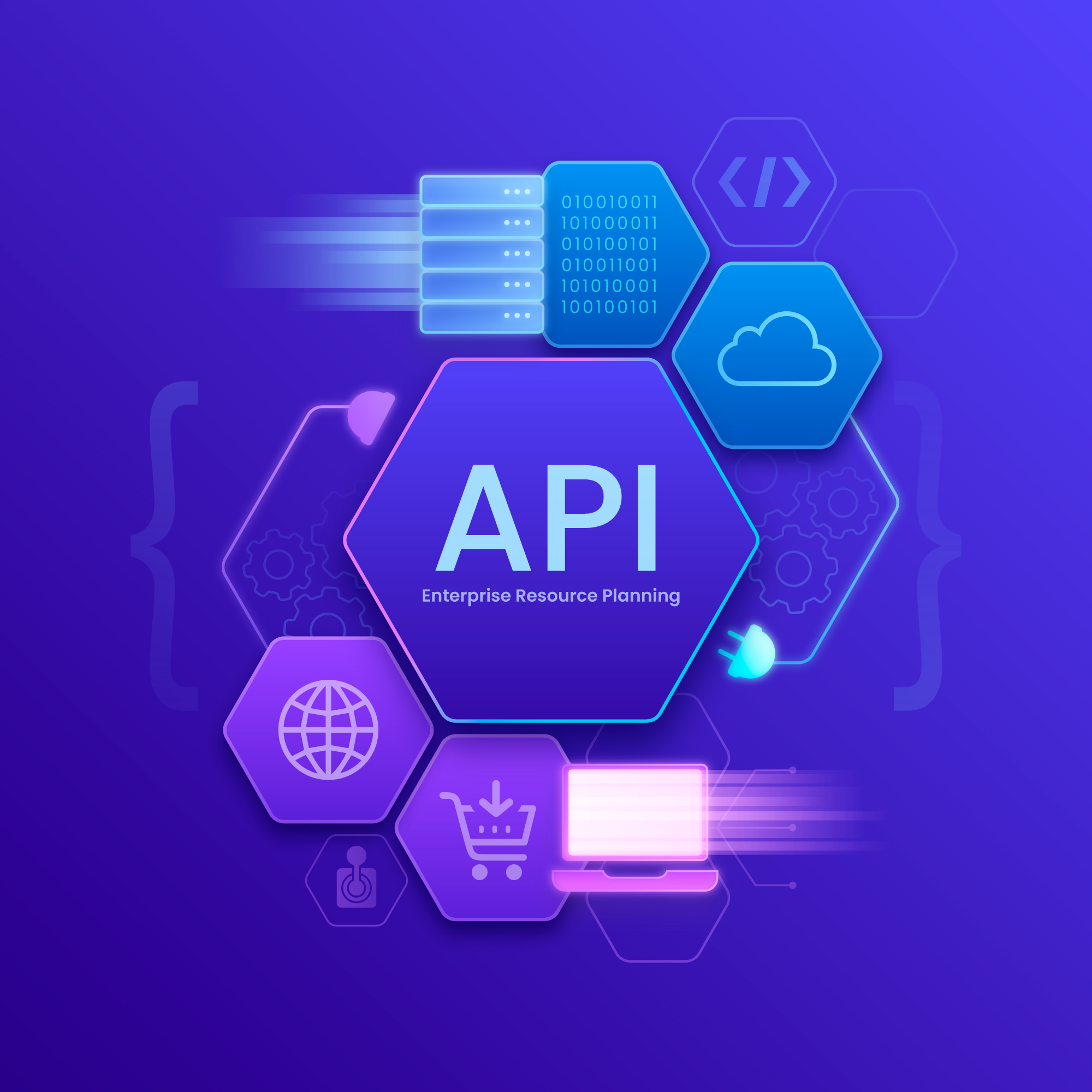
API Integration Tools to Consider Using in 2025
In an era where digital ecosystems demand instantaneous data exchange and hyper-personalized experiences, API integrations form the critical infrastructure enabling applications to communicate securely and efficiently. Consider a scenario where a fintech app processes real-time transactions: without robust API orchestration, latency spikes could lead to failed payments, eroding user trust. The API management market, valued at approximately $7.1 billion in 2025, is forecasted to expand to $58.7 billion by 2034, driven by a 26.5% compound annual growth rate as enterprises increasingly adopt AI-infused and event-driven architectures. Moreover, studies indicate that by 2025, over 70% of new enterprise applications will incorporate AI-powered APIs, reducing operational silos and boosting productivity by up to 35% in sectors like healthcare and e-commerce.
At Sama Integrations, our team of integration specialists has architected solutions for diverse clients, from startups automating workflows to Fortune 500 firms migrating to microservices. This comprehensive guide delves into 2025’s API landscape, offering technical insights, empirical data, and strategic recommendations. We’ll explore emerging trends with architectural implications, evaluate leading tools through performance metrics, outline selection criteria grounded in scalability benchmarks, and detail implementation best practices—including code patterns and monitoring strategies. By the end, you’ll have actionable intelligence to architect resilient integrations that drive measurable ROI, such as cutting deployment times by 40-50% via optimized tooling.
The Evolving Landscape: Key Trends Shaping API Integrations in 2025
The API ecosystem is undergoing a paradigm shift, influenced by advancements in distributed systems, machine learning, and regulatory compliance. The global integration platform as a service (iPaaS) market is projected to grow from $12.87 billion in 2024 to $78.28 billion by 2032, underscoring the demand for agile connectivity. Below, we dissect four pivotal trends, complete with technical underpinnings and real-world implications.
AI-Driven Automation Takes Center Stage
Artificial intelligence is revolutionizing API management by embedding predictive analytics and natural language processing into integration pipelines. For instance, AI algorithms can analyze historical API traffic to forecast bottlenecks, employing techniques like anomaly detection via time-series models (e.g., ARIMA or LSTM networks). A 2025 analysis reveals that AI-integrated APIs can slash manual intervention by 40%, particularly in error resolution and schema mapping. Tools leveraging generative AI, such as auto-generating OpenAPI specifications from natural language descriptions, are becoming standard, enabling developers to prototype endpoints in minutes rather than hours.
Technically, this involves integrating ML models into API gateways for runtime optimizations, like dynamic rate limiting based on user behavior patterns. In practice, for a SaaS platform handling 1 million daily requests, AI-driven caching could reduce latency from 500ms to under 100ms, enhancing throughput in high-concurrency environments. However, challenges include model drift, necessitating continuous retraining with federated learning to maintain accuracy across multicloud deployments.
Heightened Security Focus Amid Rising Threats
API vulnerabilities now account for over 90% of web-based attacks, per 2025 security reports, with API abuse (e.g., shadow APIs and business logic exploits) surging by 20% year-over-year. The “shift-left” approach—integrating security in the design phase—employs tools like OWASP API Security Top 10 compliance checks, focusing on broken object-level authorization (BOLA) and excessive data exposure.
Advanced protocols such as OAuth 2.1 with Proof Key for Code Exchange (PKCE) and JWT token introspection are essential for zero-trust architectures. Moreover, AI-assisted threat detection, using behavioral analytics to flag anomalous queries (e.g., via graph neural networks), can mitigate DDoS and injection attacks in real-time. Regulatory pressures, including GDPR expansions and emerging API-specific standards, demand audit trails and encryption-at-rest, with non-compliance risking fines up to 4% of global revenue. For enterprises, adopting runtime protection platforms that scan for zombie APIs—unused endpoints prone to exploitation—can reduce breach risks by 30%.
Low-Code/No-Code Dominance for Accelerated Development
Low-code/no-code (LCNC) platforms are democratizing API integrations, allowing domain experts to assemble workflows without deep programming knowledge. These tools utilize visual builders to abstract complexities like RESTful endpoint configuration or GraphQL schema federation, potentially accelerating deployment by 50-80% in hybrid environments. A key enabler is pre-built connectors (e.g., over 7,000 in some platforms), which handle authentication flows and data transformations via drag-and-drop interfaces.
From a technical standpoint, LCNC leverages underlying code generation engines that compile visual models into executable scripts, often in languages like Node.js or Python. For example, integrating Salesforce with Stripe might involve mapping JSON payloads without manual coding, but edge cases require extensibility hooks for custom JavaScript snippets. Market data shows LCNC adoption rising 25% in 2025, particularly in SMBs, where it cuts IT dependency and fosters citizen development—though governance frameworks are crucial to prevent sprawl.
Async APIs and Real-Time Processing for Event-Driven Architectures
Synchronous APIs are yielding to asynchronous models, powered by standards like AsyncAPI 3.0, which defines event schemas for pub/sub systems. This shift supports real-time processing in IoT and fintech, where WebSockets or Kafka-based streams handle high-velocity data with sub-50ms latencies. Technically, async designs decouple services using message queues (e.g., RabbitMQ or AWS SQS), enabling idempotent operations and saga patterns for distributed transactions.
Reports indicate that by 2025, 60% of new APIs will be event-driven, reducing polling overhead and improving scalability in microservices. For instance, in a logistics app, async notifications for shipment updates can process 10x more events without blocking threads. Challenges include ensuring at-least-once delivery semantics and implementing backpressure mechanisms to avoid overload, often via reactive programming libraries like RxJS.
These trends collectively propel the API economy toward greater resilience, with Asia-Pacific leading adoption at a 15.6% CAGR. If your team is grappling with legacy integrations amid these shifts, our consulting services provide tailored audits to align your stack with 2025 standards.
Ready to Elevate Your API Integration Strategy for 2025?
Stay ahead of the curve with modern API integration tools and expert implementation. Sama Integrations helps businesses design scalable, secure, and future-ready integration architectures to power digital transformation.
Top API Integration Tools to Consider in 2025
Selecting from the plethora of tools requires evaluating them against metrics like throughput (requests per second), error rates, and integration depth. We’ve curated nine standout options for 2025, expanding beyond basics to include emerging players. Our assessment draws from hands-on benchmarks and industry evaluations, where tools like MuleSoft demonstrate 99.99% uptime in enterprise scenarios. The table below summarizes key attributes, followed by in-depth profiles.
| Tool | Best For | Key Features | Pros | Cons | Pricing Insight | Throughput Benchmark |
| Zapier | SMBs & Quick Automations | No-code workflows, 7,000+ connectors, AI-powered zap suggestions, webhook support
|
Rapid prototyping; minimal latency for low-volume tasks | Caps at 100K tasks/month; weak for complex ETL | Free tier; $19.99-$69/user/month | Up to 1K req/min |
| Workato | Enterprise Automation | Embedded iPaaS, ML-based orchestration, real-time bidirectional sync, recipe branching
|
SOC 2/Type II compliant; handles 1M+ events/day | Advanced features require scripting knowledge | Custom; starts ~$10K/year | 5K+ req/sec with clustering |
| MuleSoft Anypoint Platform | API-Led Connectivity | Full lifecycle mgmt, RAML/OAS design, Anypoint Exchange for reusables, Flow Designer
|
Scales to 10K+ APIs; built-in governance policies | Steep onboarding; resource-intensive | $10K-$100K/year based on vCores | 10K req/sec peak |
| Boomi | Hybrid Cloud Integrations | Low-code AtomSphere, AI Master Data Hub, edge gateways, 200+ connectors
|
Deploys in <30 days; excels in EDI/B2B | Dated UI; connector limits in base tiers | $549/month base; enterprise custom | 2K req/sec average |
| Postman | Developer Testing & Collaboration | API mocking servers, Newman CLI for CI/CD, GraphQL introspection, collections
|
Free for small teams; integrates with Git | Primarily dev-focused; no native orchestration | Free to $12/user/month; enterprise $29/user | N/A (testing tool) |
| Apigee (Google Cloud) | API Management at Scale | Edge analytics, ML threat protection, monetization portals, hybrid deployment
|
GCP integration; auto-scales to billions of calls | Potential lock-in; complex quota mgmt | ~$0.03/1K calls; free tier limited | 100K+ req/sec |
| Microsoft Power Automate | Microsoft-Centric Ecosystems | RPA flows, AI Builder for predictions, 1,000+ connectors, desktop automation
|
Tight Azure/365 synergy; low-cost for MS users | Limited outside ecosystem; flow limits | $15/user/month premium; included in M365 | 500 req/min per flow |
| IBM API Connect | Secure Enterprise Gateways | Microgateway architecture, OAuth/JWT enforcement, analytics dashboards, test automation
|
Strong hybrid support; AI-infused insights | Heavy on resources; learning curve | Custom; ~$5K/month entry | 5K req/sec |
| Apidog | Full Lifecycle Management | Visual API design, auto-testing, mock servers, collaboration hubs
|
End-to-end coverage; supports gRPC/GraphQL | Newer entrant; fewer connectors | Free to $29/user/month | 2K req/sec in tests |
Deep Dive into Select Tools
- Zapier: Ideal for event-triggered automations, Zapier uses a trigger-action model where webhooks initiate flows. Technically, it supports custom HTTP requests with JSON parsing, but for high-throughput, integrate with Node.js lambdas to handle retries exponentially (e.g., backoff factor of 2).
- Workato: Stands out for recipe-based orchestration, incorporating conditional logic and loops. Its AI detects schema drifts, auto-adjusting mappings—perfect for dynamic data like CRM updates. Benchmarks show it processes 1M records/hour with <1% failure rate in containerized setups.
- MuleSoft Anypoint: Leverages DataWeave for transformations, enabling XPath-like queries on XML/JSON. For microservices, its API-led connectivity promotes composable assets, reducing redundancy by 25% in large orgs.
- Boomi: Excels in master data management with AI harmonization, syncing disparate sources via atoms (lightweight runtimes). Technical tip: Use its Flow for low-code BPM, integrating with Kubernetes for auto-scaling.
- Postman: Beyond testing, its monitors run scheduled assertions, catching regressions via JUnit reports. For async APIs, mock servers simulate WebSocket responses, aiding in TDD cycles.
- Apigee: Google’s ML models predict traffic spikes, applying autoscaling policies. Security features include SPIFFE for mTLS, ideal for zero-trust.
- Microsoft Power Automate: Integrates Copilot for natural language flow creation, e.g., “Sync SharePoint to Dynamics.” Supports custom connectors with Azure Functions for extensibility.
- IBM API Connect: Features cognitive analytics for usage patterns, using Watson to recommend optimizations. Strong in mainframe integrations via z/OS support.
- Apidog: Offers visual debugging with breakpoint simulations, supporting protobuf for gRPC—emerging in 2025 for efficient binary comms.
These tools reflect 2025’s emphasis on hybrid, AI-enhanced integrations, with leaders like Boomi and MuleSoft dominating enterprise mindshare.
Ready to Elevate Your API Integration Strategy for 2025?
Stay ahead of the curve with modern API integration tools and expert implementation. Sama Integrations helps businesses design scalable, secure, and future-ready integration architectures to power digital transformation.
How to Choose the Right API Integration Tool: A Step-by-Step Guide
Navigating tool selection demands a structured methodology, factoring in quantitative metrics like total cost of ownership (TCO) and qualitative aspects like extensibility. Industry benchmarks suggest poor choices can inflate costs by 30%, so follow this technical framework.
- Assess Scalability Needs: Quantify expected load—e.g., 1M+ TPS? Evaluate horizontal scaling via Kubernetes compatibility and auto-provisioning. Tools like Apigee handle petabyte-scale data with <200ms p99 latency.
- Prioritize Ease of Use and Developer Experience: For LCNC, measure time-to-first-integration; Zapier averages 5 minutes. Developers favor tools with SDKs in multiple languages (e.g., Python, Java) and IDE plugins.
- Security and Compliance Evaluation: Audit for FIPS 140-2 encryption, API shielding against OWASP threats, and compliance with SOC 2/ISO 27001. Simulate attacks to test resilience.
- Cost vs. ROI Analysis: Calculate TCO including licensing, compute, and maintenance. Pre-built connectors can yield 25% faster TTM; use ROI calculators for projections.
- Ecosystem Fit and Interoperability: Ensure alignment with your stack—e.g., AWS Lambda for serverless. Test for protocol support (REST, GraphQL, gRPC) and vendor neutrality.
- Proof-of-Concept Testing: Run POCs with real datasets, measuring metrics like error recovery time and integration fidelity.
If this process overwhelms, leverage our custom development expertise to prototype and benchmark options.
Best Practices for Implementing API Integrations in 2025
Successful implementations hinge on rigorous engineering principles, with failures often stemming from overlooked edge cases—costing businesses $1.7 trillion annually in downtime. Adopt these advanced practices for robust deployments.
- Adopt API-First Design with Versioning: Define contracts using OpenAPI/Swagger early, employing semantic versioning (e.g., v1.2.3) to avoid breaking changes. Use headers like Accept-Version for backward compatibility.
- Implement Resilient Error Handling and Retries: Employ circuit breakers (e.g., Hystrix patterns) and exponential backoff retries. For async, ensure idempotency with unique request IDs to handle duplicates.
- Secure with Multi-Layer Defenses: Mandate mTLS for internal APIs, rate limiting (e.g., 100 req/min per IP), and input validation against schemas to thwart injections. Monitor for shadow APIs via discovery tools.
- Optimize Performance with Caching and Compression: Use Redis for response caching, gzip/brotli for payloads (reducing size by 70%), and CDNs for global distribution.
- Establish Comprehensive Monitoring and Observability: Integrate Prometheus/Grafana for metrics (e.g., golden signals: latency, traffic, errors, saturation). Trace distributed requests with OpenTelemetry for root-cause analysis.
- Automate Testing and CI/CD Pipelines: Write contract tests with Pact, load tests via JMeter, and integrate into GitHub Actions for zero-downtime deployments.
- Govern for Scale: Centralize API catalogs, enforce style guides (e.g., RESTful maturity model level 3), and conduct regular audits.
For ongoing maintenance, our managed integration services handle scaling and updates, while support and troubleshooting resolves issues swiftly.
Ready to Elevate Your API Integration Strategy for 2025?
Stay ahead of the curve with modern API integration tools and expert implementation. Sama Integrations helps businesses design scalable, secure, and future-ready integration architectures to power digital transformation.
Wrapping Up: Future-Proof Your Integrations Today
As APIs evolve into intelligent, secure conduits for data, mastering 2025’s tools and trends is imperative for competitive edge. With the API market poised for $51.11 billion by 2033, proactive adoption can yield 35% efficiency gains. Partner with Sama Integrations to transform your vision into reality—whether through custom builds or expert guidance.
What’s your top API challenge in 2025? Share below for personalized insights.



